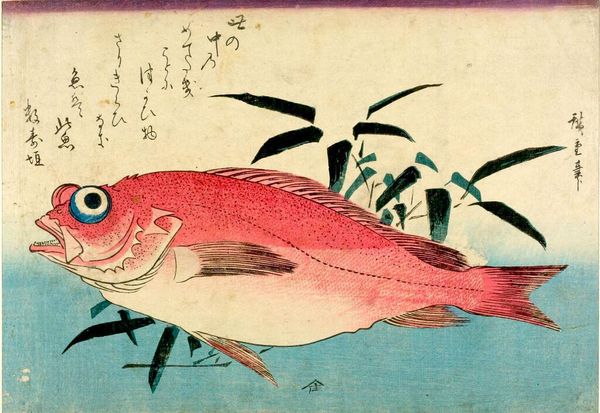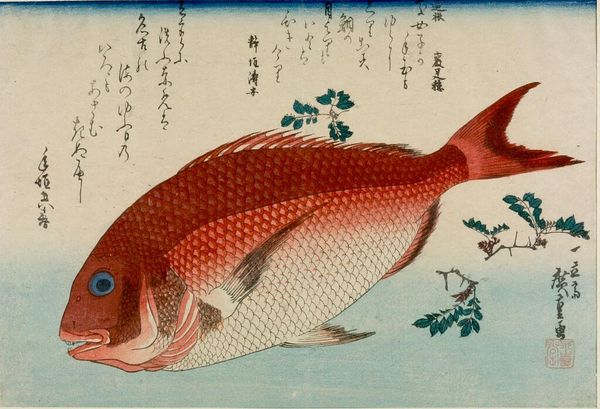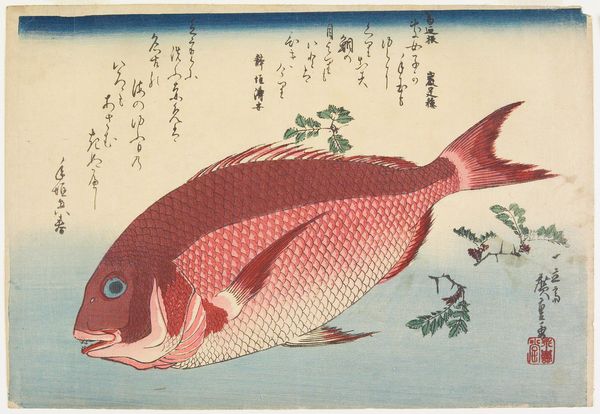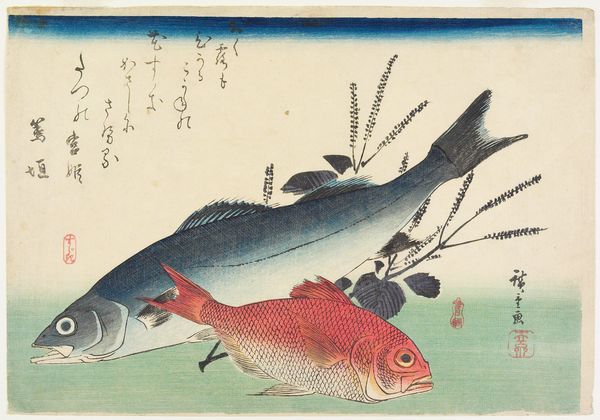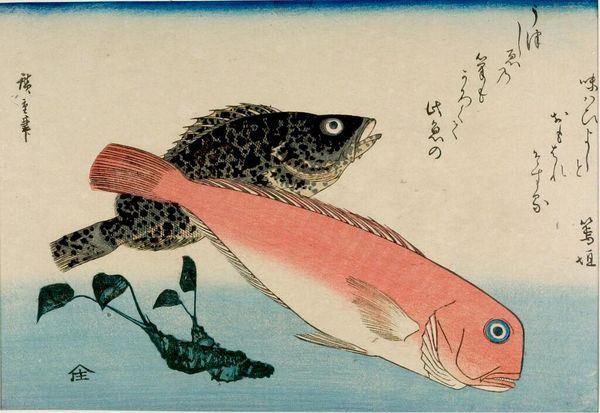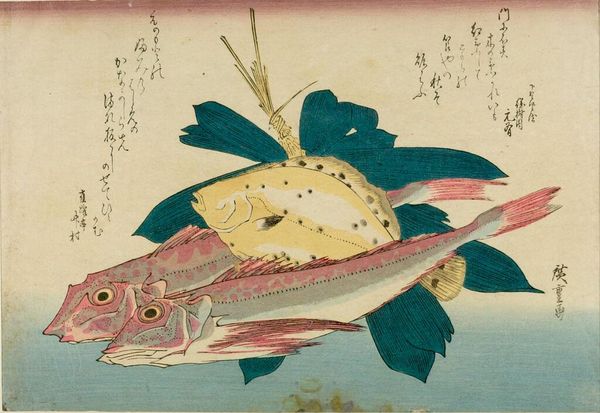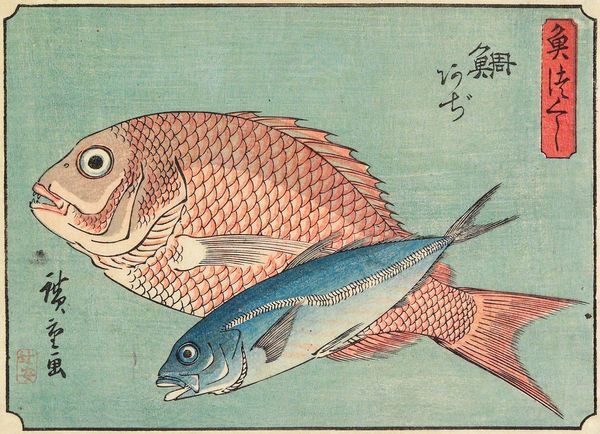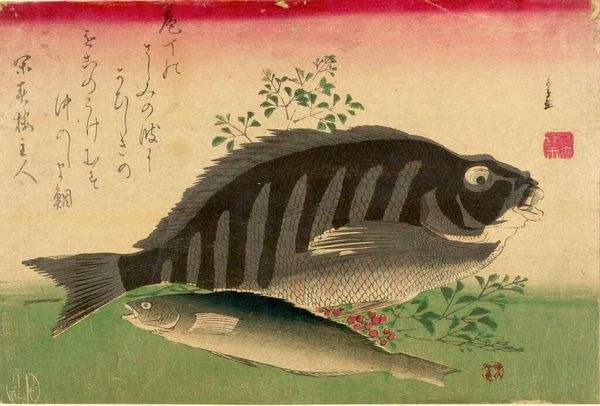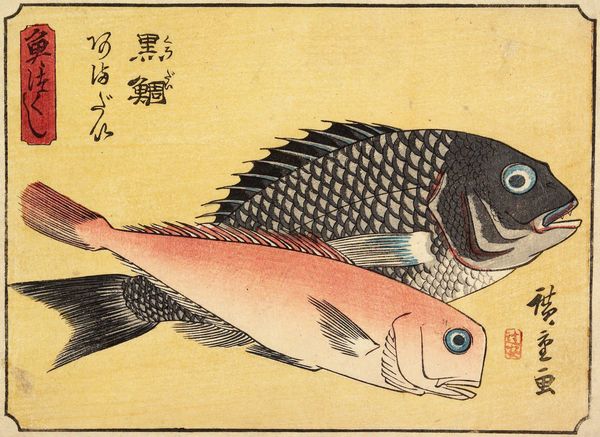
Large-Eye Seabream (Mede tai) and Bamboo Grass (Sasa), from the series A Shoal of Fishes (Uo-zukushi) c. 19th century
0:00
0:00
Dimensions: Paper: H. 25.1 cm x W. 36.4 cm (9 7/8 x 14 5/16 in.)
Copyright: CC0 1.0
Curator: This print by Utagawa Hiroshige, likely from his series "A Shoal of Fishes," features a large-eye seabream alongside bamboo grass. Editor: The fish is striking, particularly its bright red hue and that prominent eye. It’s almost cartoonish in its intensity. Curator: Hiroshige, who died in 1858, was a master of ukiyo-e. His work often depicted elements of the natural world and daily life. We should consider that the printmaking process in Japan was highly collaborative. Editor: Absolutely, the materiality is important. The woodblock carving and printing required specialized labor. The availability of certain pigments also dictated choices in representation. I wonder about the role of the publisher in commissioning works like these. Curator: That's an excellent question. These prints were part of a larger consumer culture, and their popularity reflected contemporary social values. And let's not forget the cultural significance of the seabream in Japan, often associated with celebratory occasions. Editor: Fascinating. Thinking about it now, the bamboo and fish become potent signifiers of particular historical moments and social practices. Curator: Indeed. This piece provides a glimpse into the interconnectedness of nature, culture, and commerce in 19th-century Japan. Editor: It's a stark reminder that art never exists in a vacuum.
Comments
No comments
Be the first to comment and join the conversation on the ultimate creative platform.
